Footwear appears in a range of folklore and makes a memorable appearance is a series of fairy tales. Just look at the Seven League Boots or Cinderella’s glass slipper.
But it turns out that it’s more than just a plot device when it comes to folklore. A whole range of superstitions and practices see footwear of different types used to protect the home, bring luck, ward off illness, and even bring love.
Let’s dig into them in this article! Keep reading, or hit play to hear the podcast episode of this post.
Concealed Shoes
Shoes are some of the common items found concealed within homes, often believed to have protective powers. They’re usually found under floors, in walls or roof spaces, or near chimneys. They’re always worn and old, suggesting a new use for shoes that reached the end of their lifespan (Davies 2018: 81).
The Northampton Museum and Art Gallery shoe curators have collected over 3000 shoe finds since the 1950s, many of which date to the 18th and 19th centuries. It’s most likely the builders left the shoes during renovations or rebuilds (Davies 2018: 81).
Owen Davies and Ceri Houlbrook note that people only hid one shoe from a pair, asking what happened to the other one. Given it’s believed that builders added them during renovation, I wonder if they collected shoes to then ‘dispense’ during building work? No one knows why people would conceal shoes within parts of the building fabric. Davies and Houlbrook note that shoes mould themselves to the wearer, bearing traces of their presence (2018: 81).

Perhaps this made them ideal as a protective item, linking the building and its occupants. Children’s shoes may have been more powerful for deterring evil spirits (Nicholl 2017: 18). June Swann even theorises that they provided a form of sacrificial offering (2016: 128).
Other Protective Shoes
Historians have also found shoes in other places, seemingly as protective devices. In 1990, they found medieval leather boots from c. 1450 in parts of England’s oldest coal mine.
Jacqueline Simpson notes its similarity to a later custom from lead mines in Yorkshire and Derbyshire, and a copper mine in Wales, in which miners left a clog in specific parts of the mine. This seemed to be the last part they reached while working a passage, the backfilling of any passages, or wherever shafts collapsed (2003: 325).
No one is really sure why shoes act in a protective fashion. Some think that old shoes are dirty, and therefore attract luck (Simpson notes the saying ‘Where there’s muck there’s luck’ [2003: 325]). Given people kept shoes as ornaments on the mantelpiece for luck, or wore them as lucky charms on jewellery, this could be the case.
Mr Rose’s Boots
There was once an old belief that people should bury the boots of a murdered man to prevent his ghost from disturbing the living. Such a tradition even appeared in a murder trial on the Isle of Arran in 1889. A Londoner named Edwin Rose went missing on the island.
His mutilated body turned up three weeks later hidden under a boulder. A police constable buried the boots on Corrie beach, below the high-water mark. There was some debate as to whether the constable buried them because he was told to “put them out of sight”, and he misinterpreted the meaning.
The judge clearly felt annoyed at not having them produced as evidence. Yet a letter to Folklore journal in 1890 provided the explanation as to the boot burying (Joule 1890: 135). The article doesn’t discuss if burying the boots did indeed lay Mr Rose’s ghost.
Love Divination Using Footwear
One 19th-century practice required a girl to put her shoes at right angles before she went to bed. As she did so, she said, “I set my shoes in the form of a T, Hoping my true-love for to see”. If she did this correctly, she’d dream of her husband (Simpson 2003: 325).
A longer version used specifically on Midsummer Eve saw the person make the T-shape and repeat this rhyme; “I place my shoes like a letter T, In hopes my true love I shall see, In his apparel and his array, As he is now and every day’. Then they had to swap the shoes over and repeat the charm, before reversing them and saying it a third time (Opie 2005: 352).
An unmarried girl had nine attempts to throw her shoe at a willow on either New Year’s night or Easter. If it stayed among the branches, she’d marry that year (Daniels 2003 [1903]: 862).
On St Agnes Eve, girls were directed to put a thyme leaf in one shoe, and a rosemary sprig in the other. Then, they were to put them on either side of the bed while reciting the charm:
St Agnes, that’s to lovers kind,
(Baker 2011 [1969]: 149)
Come, ease the trouble of my mind.
With any luck, she would dream of the person she would marry.
Girls could also use their stockings for divination. They would pull the left stocking into the right, saying “This is the blessed Friday night; I draw my left stocking into my right, To dream of the living, not of the dead, To dream of the young man I am to wed’. Then she wouldn’t speak to anyone for the rest of the night, and go to bed (Opie 2005: 378).
In Northumberland, girls would tie their left stocking around their neck to dream of their future husband.
There was even a love spell involving your stockings. Girls in the early 20th century might pin their stockings to the wall, and say, ‘I hang my stocking on the wall, Hoping my true love to call; May he neither rest, sleep, nor happy be, Until he comes and speaks to me’ (Opie 2005: 378).
Let me know if it works.
Throwing Shoes
You may have seen the popular custom of tying old shoes to the car the newly married couple will use to leave their wedding venue. According to Jacqueline Simpson, this derives from a much older practice. People would throw old shoes after people setting off on a journey to wish them luck (2003: 325). It appears in Proverbs by John Heywood from 1546, with the belief being, ‘For good lucke, cast an olde shoe after mee’ (Opie 2005: 351).
The belief expanded so that it brought luck to whatever endeavour the person was doing. This would explain why throwing old shoes after a newly-married couple would bring good luck to their marriage. Queen Victoria even recorded the practice in her journal on 7 September 1855. When the royal party arrived at Balmoral, someone threw an old shoe after them into the house to bring good luck (Opie 2005: 351).
Some women even threw old shoes at ships as they passed the pier in Whitby (Opie 2005: 351).
The Heaton Shoe Tree
There’s also a rather bizarre example of living folklore right here in Newcastle upon Tyne involving shoes. It’s a sycamore tree in Heaton Park known as the Shoe Tree.
Hundreds of pairs of shoes hang from it, their knotted laces caught on the branches. No one knows exactly how, when, or why the tradition started.
The most common explanation is that people throw a pair of old shoes into the tree to celebrate momentous occasions, like finishing exams.
The council occasionally takes pairs down so the tree isn’t overly burdened by the weight. It also means any shoes likely to fall are removed before they hit anyone walking underneath.
Interestingly, a boy in Cheshire explained in 1952 that whenever he had an exam, those in his house threw a slipper after him as he left (Opie 2005: 352). It’s entirely possible that the custom of throwing shoes for luck could morph into the idea of throwing shoes into the tree.
In 1616, a witchcraft trial record reveals that throwing shoes acted as a form of divination. Here, the person would throw the shoe over the house. How or where the shoes fell dictated the answer. In this case, if the mouth of the shoe fell up, a sick person would live, and if it fell down, he would die (Opie 2005: 352). While I doubt that people throwing their shoes in Heaton Park were familiar with Orkney witch trials, it does add an extra layer to why people were throwing their shoes into a tree.
Shoe Superstitions
People once believed that if you gave shoes as a present, the recipient needed to give a halfpenny in return. If you didn’t get the money, the shoes would walk away. Some also believed it was bad luck to bring new shoes into the house on Christmas Day (Opie 2005: 350).
A belief among schoolchildren in the 1950s held that if someone got new shoes, people stood on their toes for good luck (Opie 2005: 351).
In various parts of the country, it’s held that putting a pair of new boots on the table will provoke an argument in the house. Others thought putting any boots on the table would bring bad luck. More specifically, in the Orkney Islands, putting shoes on the table would bring thunder and lightning (Opie 2005: 350).
The superstition warning against putting new shoes on a table comes from mining. When miners died at work, their shoes were brought home and put on the table – so putting shoes on a table was believed to herald a death in the family.
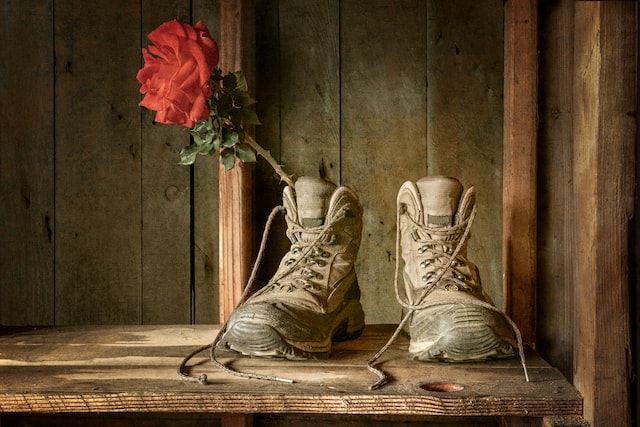
New boots creaking meant the shoemaker still needed payment. One belief explained that you should pay for them first, and then you had to steep the soles in the chamberpot (Opie 2005: 350).
Wearing out your shoes or stockings on the sole or ball of the foot meant you’d enjoy a long life and prosperity. If you wore out your heels on the inner portion of the foot, you’d be rich; on the outer, you’d be poor. Wearing out the toes meant money would slip through your fingers like water (Opie 2005: 354).
Warding Things Off with Shoes
Burning shoes appears as a remedy to ward off fever. In Nottinghamshire, the belief directed that only one old shoe should be burnt to be effective. Burning old boots before a journey also brought good luck, while some thought burning a boot on Christmas Eve meant you’d have shoe leather for the following year. Putting an old shoe in the fire could also prevent fairies from swapping newborns with changelings (Opie 2005: 351).
People also believed that turning their shoes could cure cramp – specifically, putting the slippers under the bed so the soles faced upwards. Alternatively, you should leave your shoes outside your bedroom door with one facing the room, and the other pointing away (Opie 2005: 352). Elsewhere, people thought leaving shoes in this ‘coming or going’ arrangement would ward off nightmares (Opie 2005: 353).
People pinned stockings in a cross at the foot of the bed to ward off either nightmares or cramp. They also believed putting their shoes in the form of the cross would ward off rheumatism (Opie 2005: 353). If you had a sore throat, you could put the stocking from your left foot around your neck to ease it overnight (Opie 2005: 377).
Putting on your left shoe before the right was a bad omen. That said, the Oxford Dictionary of Superstitions records that a headmaster in 1983 insisted on putting on his left football boot before the right before a match. This is somewhat confusing since there was also a belief that putting on your left stocking and shoe first would prevent toothache! (Opie 2005: 353)
Our friend Pliny also recorded a belief that spitting into your right shoe before putting it on could ward off witchcraft (Opie 2005: 353).
Shoelaces
Shoelaces are even subject to some strange superstitions. In one, if you discovered your lace had come undone, you needed to walk nine paces before you tied it. Otherwise, you’d tie bad luck to yourself for the rest of the day (Simpson 2003: 324).
If you wanted to give a friend a new bootlace, they needed to give you a broken one in return (Simpson 2003: 324). Meanwhile, people believed a broken shoelace was a bad omen before a journey (Simpson 2003: 324).
Going Barefoot
We can’t talk of footwear without talking of its opposite – that of being barefoot. In the 18th century, there was a belief it was bad luck to meet a bare-footed person in the morning. Later in the century, people believed it brought bad luck to a journey if a barefoot woman crossed the road in front of them. When this happened, they would seize her and scratch her forehead until they drew blood.
It was particularly bad for a bride to encounter a bare-footed woman on the way to church. Barefooted people arriving at a house during the burning of the yule log also brought bad luck. Meeting a red-haired woman with bare feet meant you had to go back the way you’d been to avoid something bad happening to you (Opie 2005: 166).
It seems likely these fears of barefoot people stem from a fear of poverty. The cost of shoes meant that you might do without if they were beyond your price range. Therefore, not having shoes became a stigma, with society shunning those without (rather than helping them to afford them). It makes the idea of burning old shoes for luck seem incredibly wasteful in the face of some people actually needing shoes.
What do we make of the folklore of footwear?
Owen Davies and Ceri Houlbrook are right in that footwear is incredibly personal. It moulds to our feet, and where stockings are concerned, are close to our body all day.
This degree of personal contact means you would feel that you had a connection with the item. That might make it more useful in helping you to protect your home for example, or ward off illness.
Shoes are also one of those things we buy expecting at some point they will wear out. You would realise you would need to buy a new pair, and therefore you would need to find a use for the old ones.
Many of the uses of shoes depends on them being old and dilapidated, apart from the ones where you’re arranging them in a particular fashion. In those cases, you can do that with anything you can put your feet in.
But when you look at the ones involving concealing, throwing, or burning shoes, they always specify old ones, not new ones. It’s interesting that all these practices have grown up around something that’s going to be old, tired and worn out.
Let me know if you’ve practised any of these or if you know any other ones as well!
What footwear folklore do you know?
References
Baker, Margaret (2011), Discovering the Folklore of Plants, 3rd edition, Oxford: Shire Classics (aff link).
Daniels, Cora Linn and C.M. Stevens (2003 [1903]), Encyclopaedia of Superstitions, Folklore, and the Occult Sciences of the World, Vol. II, Honolulu: University Press of the Pacific (aff link).
Davies, Owen & Ceri Houlbrook (2018), ‘Concealed and Revealed: Magic and Mystery in the Home’, in Sophie Page and Marina Wallace (eds), Spellbound: Magic, Ritual, and Witchcraft, Oxford: Ashmolean Museum, pp. 67-95 (aff link).
Opie, Iona and Moira Tatem (2005), Oxford Dictionary of Superstitions, Oxford: Oxford University Press (aff link).
Nicholl, John (2017), ‘A Kind of Magic’, Archaeology Ireland, 31:2, pp. 15-18.
Simpson, Jacqueline and Steve Roud (2003), Oxford Dictionary of English Folklore, Oxford: Oxford University Press (aff link).
Swann, June (2016), ‘Shoes Concealed in Buildings’, in Ronald Hutton (ed)., Physical Evidence for Ritual Acts, Sorcery and Witchcraft in Christian Britain: A Feeling for Magic, Basingstoke: Palgrave Macmillan, pp. 118-130 (aff link).
Nutty about folklore and want more?
Add your email below and get these posts in your inbox every week.
You'll also get my 5-step guide to protecting your home using folklore!

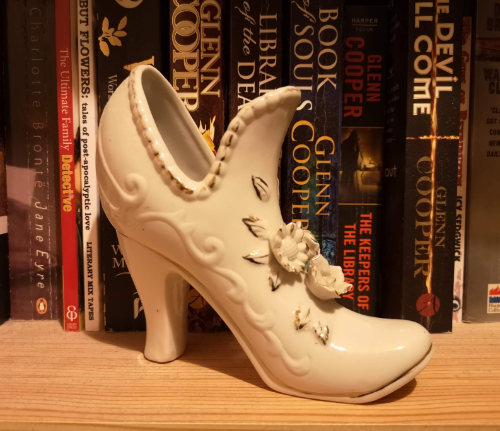
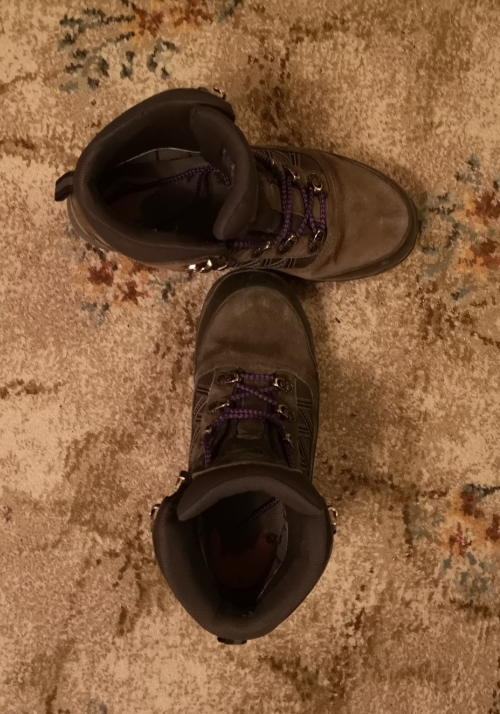

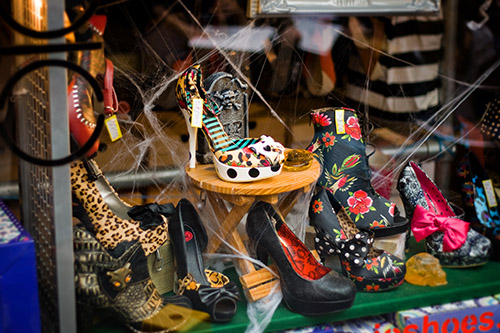
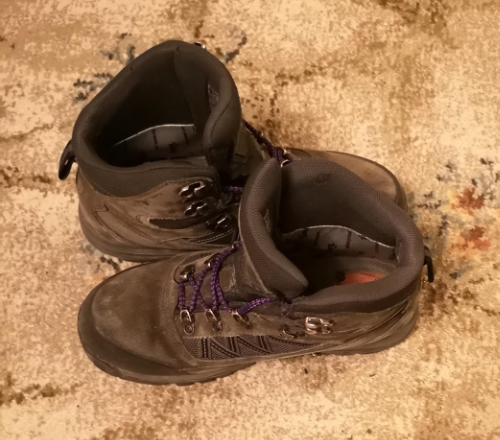
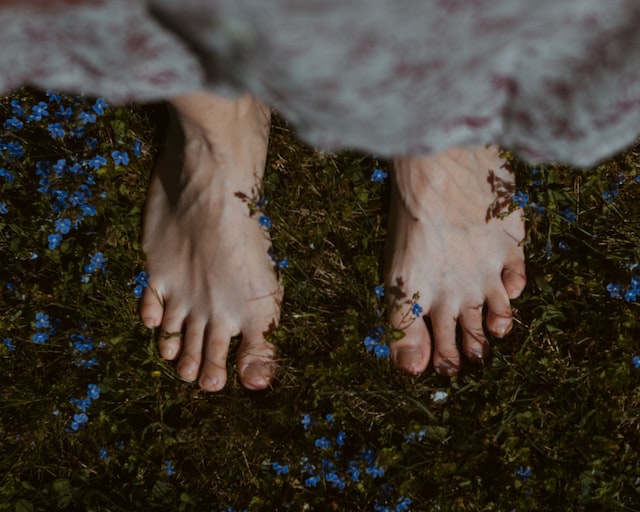
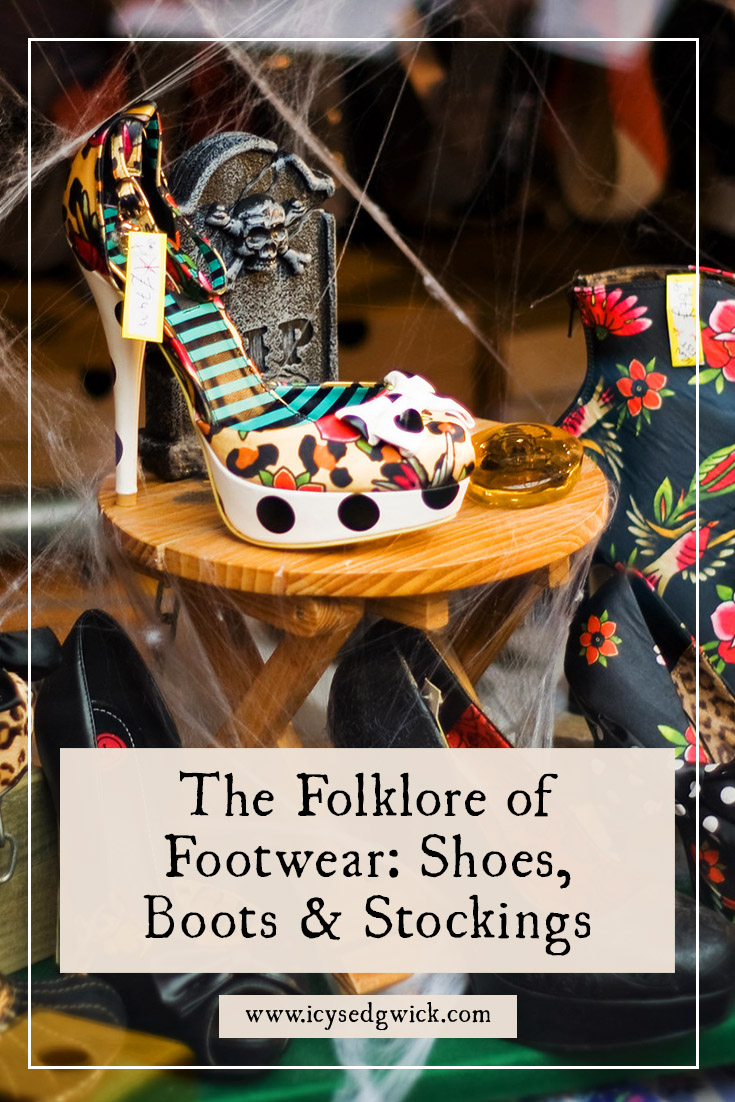





 Buy me a coffee on Ko-fi
Buy me a coffee on Ko-fi

I once met a couple in Heaton Park who were just about to throw an old pair of shoes into the shoe tree as she had just finished her final exams. So that belief was still running is the last decade or so.